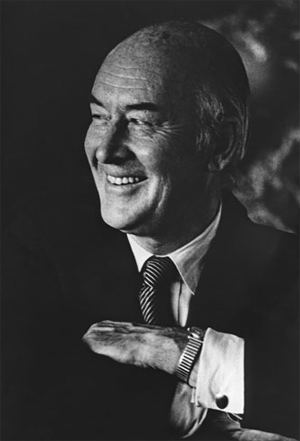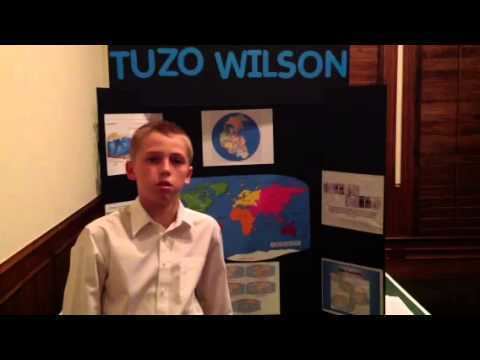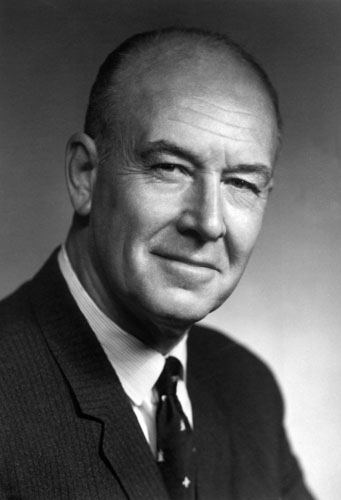Nationality Canadian Name John Wilson Fields Geophysics & Geology Role Geologist | Notable students Harold Williams | |
 | ||
Born October 24, 1908Ottawa, Ontario, Canada ( 1908-10-24 ) Alma mater University of TorontoUniversity of CambridgePrinceton University Known for Theory of Plate tectonics Died April 15, 1993, Toronto, Canada Books I.G.Y., One Chinese Moon, Unglazed China, Report of the Commission of Inquiry on Aluminum Wiring Education University of Cambridge, Princeton University, University of Toronto, St John's College, Cambridge Awards Wollaston Medal, Penrose Medal, John J. Carty Award for the Advancement of Science | ||
Institutions University of Toronto Doctoral advisor Harry Hammond Hess Doctoral students Harold Williams | ||
Tuzo Wilson Describing Transform Fault
John Tuzo Wilson, CC, OBE, FRS, FRSC, FRSE (October 24, 1908 – April 15, 1993) was a Canadian geophysicist and geologist who achieved worldwide acclaim for his contributions to the theory of plate tectonics.
Contents
- Tuzo Wilson Describing Transform Fault
- Tuzo Wilson Jigsaw Fit
- Birth education and military
- Career and awards
- Photography
- Selected publications
- References

Plate tectonics is the idea that the rigid outer layers of the Earth (crust and part of the upper mantle), the lithosphere, are broken up into numerous pieces or "plates" that move independently over the weaker asthenosphere. Wilson maintained that the Hawaiian Islands were created as a tectonic plate (extending across much of the Pacific Ocean) shifted to the northwest over a fixed hotspot, spawning a long series of volcanoes. He also conceived of the transform fault, a major plate boundary where two plates move past each other horizontally (e.g., the San Andreas Fault). His name was given to two young Canadian submarine volcanoes called the Tuzo Wilson Seamounts. The Wilson cycle of seabed expansion and contraction (also called the Supercontinent cycle) bears his name.

Tuzo Wilson - Jigsaw Fit
Birth, education and military

Wilson's father was of Scottish descent and his mother was a third-generation Canadian of French descent. He was born in Ottawa, Ontario. He became one of the first people in Canada to receive a degree in geophysics, graduating from Trinity College at the University of Toronto in 1930. He obtained various other related degrees from St. John's College, Cambridge. His academic years culminated in his obtaining a doctorate in geology in 1936 from Princeton University. After completing his studies, Wilson enlisted in the Canadian Army and served in World War II. He retired from the army with the rank of Colonel.
Career and awards

John Tuzo Wilson was President (1957–1960) of the International Union of Geodesy and Geophysics (IUGG). In 1969, he was made an Officer of the Order of Canada and was promoted to the rank of Companion of that order in 1974. Wilson was awarded the John J. Carty Award from the National Academy of Sciences in 1975. In 1978, he was awarded the Wollaston Medal of the Geological Society of London and a Gold Medal by the Royal Canadian Geographical Society. He also served as honorary vice president of the RCGS. He was a Fellow of the Royal Society of Canada, of the Royal Society of London and of the Royal Society of Edinburgh. He was the Principal of Erindale College at the University of Toronto and was the host of the television series The Planet of Man. He was elected President-elect (1978–1980) and President (1980–1982) of the American Geophysical Union. He also served as the Director General of the Ontario Science Centre from 1974 to 1985. He and his plate tectonic theory are commemorated on the grounds outside by the Centre by a giant "immovable" spike indicating the amount of continental drift since Wilson's birth.

The John Tuzo Wilson Medal of the Canadian Geophysical Union recognizes achievements in geophysics. He is also commemorated by a named memorial professorship and an eponymous annual public lecture delivered at the University of Toronto.
He is one of the 2016 inductees into Legends Row: Mississauga Walk of Fame.
Photography
Wilson was an avid traveller and took a large number of photographs during his travels to many destinations, including European countries, parts of the then USSR, China, the southern Pacific, Africa, and to both polar regions. Although many of his photos are geological--details of rocks and their structures or panoramas of large formations--the bulk of his photos are of the places, activities and people that he saw on his travels: landscapes, city views, monuments, sites, instruments, vehicles, flora and fauna, occupations and people.
